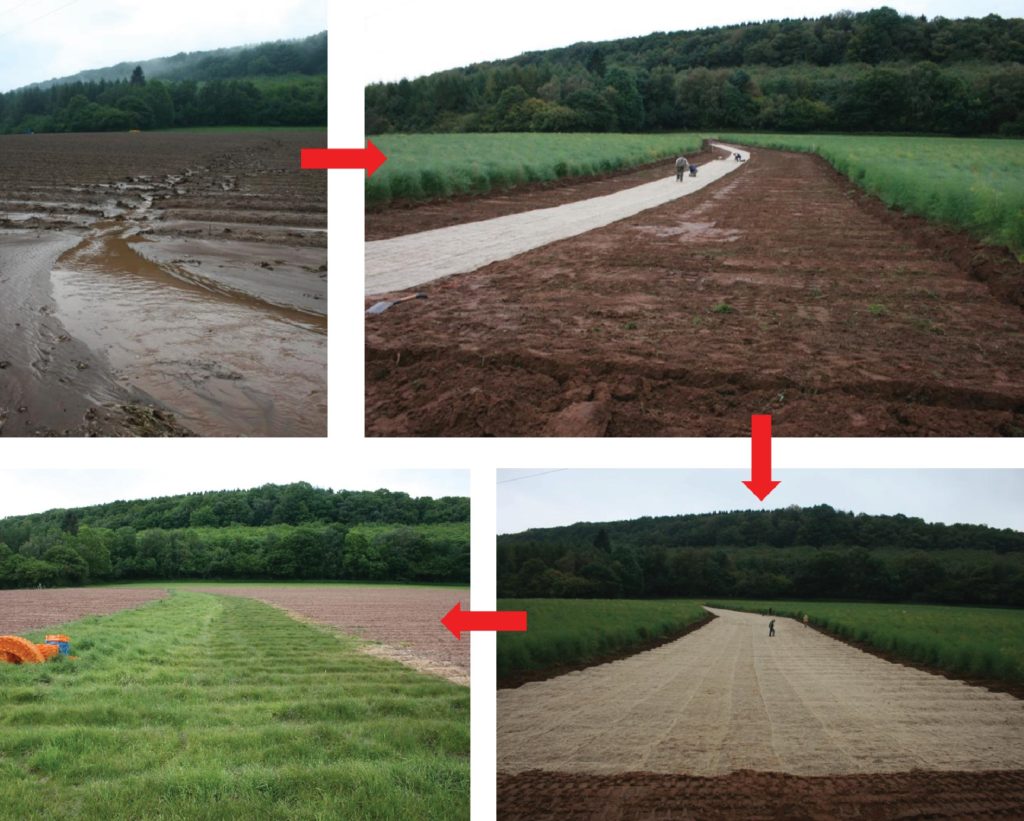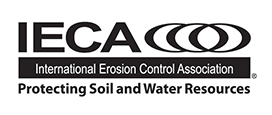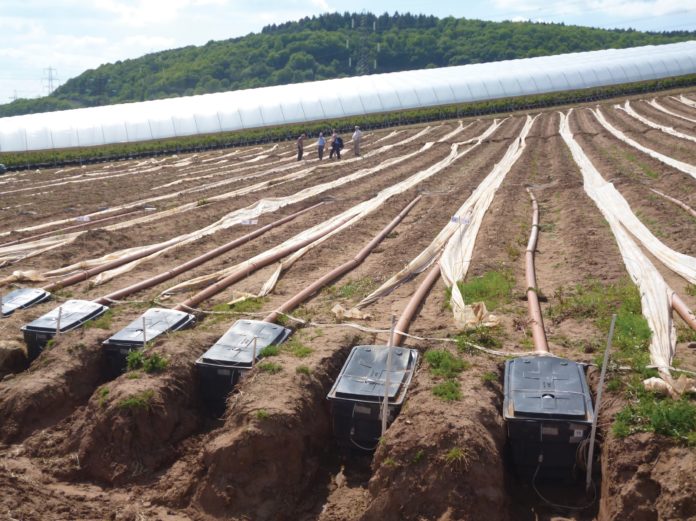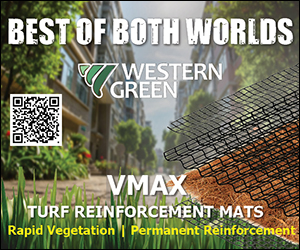“The thin layer of soil covering the earth’s surface represents the difference between survival and extinction for most terrestrial life.”1 This quote demonstrates the vital importance of soils to human existence, by delivering multiple goods and services to all of society. These soil-dependent benefits include agricultural production (e.g., food, fibre, fodder and biofuels), water storage and supply (to mitigate droughts and floods), carbon sequestration (to regulate CO2 emissions and associated global warming) and habitat protection (to support biodiversity). Soil is also a key natural asset that supports green infrastructure in urban areas, provides recreation and amenity opportunities, and protects buried cultural heritage. Indeed, soils have been linked to many of the United Nations’ Sustainable Development Goals (UN SDGs) which currently drive international governments’ policies related to Zero Hunger, Good Health and Well-being, Clean Water, Clean Energy, Climate Action and Life on Land (Figure 1).2
Despite our reliance on soils, this precious resource is often overlooked and undervalued by many land-based industries. Some of the terms we use for soil (e.g., dirt, muck, waste) even have negative connotations. On the other hand, the concept of soil health or soil quality is gaining increasing interest and acceptance, as the true value of soils becomes more apparent.

The Concept of Soil Health
Soil health is defined as “the capacity of soil to function, within natural or managed ecosystem boundaries, to sustain plant or animal productivity; maintain or enhance water quantity and quality; and support human health and habitation.”3 In simple terms, it is the soil’s fitness for any given use, be it food production, carbon storage, water storage or soil erosion control. Soil health is related to the physical, chemical and biological soil properties, which affect soil processes or functions and the associated delivery of goods and services. For example, the property of soil structure affects the process by which the soil receives, retains and releases rainfall, and thus how that soil can mitigate against drought and flooding events (Figure 2).
The concept of soil health is commonly used in relation to agricultural soils, but it is less well-known in other land-based industries, such as construction and mining, where soil is also important. Cranfield University is working with non-agricultural sectors to highlight the importance of healthy soils beyond only farmers’ fields. For example, commissioned by the UK’s Construction Industry Research and Information Association (CIRIA), we helped develop a prototype decision support tool to assist in the selection of sustainable soil management practices, such as better handling of soil stockpiles on construction sites, to reduce waste, which is sometimes disparagingly known as “muck away” and enhance soil health. We also contributed to the Society for the Environment’s influential Soils and Stones report, highlighting the need to recognise soils as valuable resources and materials, rather than to be mistreated and/or discarded as waste materials.4

Managing Healthy Soils
Cranfield University works with practitioners from all land-based industries to design, test and implement cost effective, practical and sustainable land management practices that improve soil health. Following the expression “prevention is better than cure,” the first step is to reduce any threats to soil health, namely soil degradation processes, in the form of soil erosion, soil compaction, loss of soil organic matter, loss of soil biodiversity, salinisation, acidification, etc.5
In the agricultural sector for example, soil losses by sheet, rill and gully erosion cause loss of crop yields on-site (i.e., where the erosion event takes place), as well as several off-site impacts. These include emissions of CO2 as buried soil carbon is exposed to the atmosphere by topsoil erosion; increased flooding due to sedimentation of eroded soil in watercourses; and declines in water quality due to turbidity from eroded soil particles and from pollutants or contaminants attached to the sediment. In vulnerable areas of the United Kingdom, soil erosion rates can typically be 15 t ha-1 yr-1 (6 tons acre-1 year-1)6 compared to soil formation rates estimated at only 1 t ha-1 yr-1 (0.45 tons acre-1 year-1).7 The economic cost of soil erosion in England, Scotland and Wales alone has been estimated at £262 million per annum ($308 million).8 This is likely to be an underestimate, especially as the effects of climate change are likely to increase soil erosion rates further, due the increase frequency and duration of high intensity, erosive rainfall events.9,10
Working with farmers, researchers at Cranfield University have demonstrated that erosion control measures such as mulching and reduced tillage intensity can significantly reduce soil losses on agricultural fields by 53% to 72% compared with previous practices11 (Figure 3). Other measures being evaluated include mulching, direct drilling12, strip tillage, erosion control blankets13 and use of field engineering features such as grassed waterways14 (Figure 4) and field buffer strips. Some of these practices were originally devised for other land uses, including construction, urban and mining sites. Others have potential use outside of agriculture such as the use of grass swales in sustainable urban drainage schemes.
Once soil degradation is controlled, agricultural soil health can be built up over time. The current trend is to use practices collectively known as “regenerative agriculture” (Figure 5). Focusing on soils, this concept extends the original scope of traditional soil conservation, whereby the preservation and protection of soil alone are insufficient to meet the increasing demands for soils to deliver multiple ecosystem goods and services to society. Soil regenerative practices include the use of cover crops in the agricultural rotation, in between the main commercial crops, to improve soil physical, biological and chemical properties. For example, cover crops improve soil structure through extensive root networks. They provide habitats for soil microorganisms and build up soil organic matter content, a vital indicator of soil health.15

Conclusion
Despite being referred to as “dirt” or “muck,” soils deliver an incredible range of vital goods and services to society. However, this is only possible when soils are in a healthy state. Soil degradation processes threaten a soil’s capacity to function and provide us with food, water regulation, biodiversity, climate change mitigation and numerous cultural benefits. There is much to be gained from practitioners and researchers working together across the land-based disciplines of civil engineering, geotechnics and agriculture to share and apply best management practices that create and support better functioning, healthier soils.
About the Expert
Jane Rickson, Ph.D., CEnv, FIAgrE, FHEA is a professor of soil erosion and conservation at Cranfield University, UK. With over 35 years international experience in soil and water engineering, supported by government and industry, her research designs and implements cost-effective, sustainable land management practices.
References
Doran, J. W., & Parkin, T. B. (1994). Defining and assessing soil quality. In D. C. C. Doran D. F. Bezdicek & B. A. Stewart (Ed.), Proceedings of a symposium on defining soil quality for a sustainable environment (pp. 3–21). Soil Science Society of America / American Society of Agronomy.
IPBES. (2018). The IPBES assessment report on land degradation and restoration. (L. Montanarella Scholes R. and Brainich A, Ed.).
Karlen, D. L., Mausbach, M. J., Doran, J. W., Cline, R. G., Harris, R. F., & Schuman, G. E. (1997). Soil quality: a concept, definition, and framework for evaluation (a guest editorial). Soil Science Society of America Journal, 61(1), 4–10.
Society for the Environment. (2021). Soils and Stones Report: Sustaining Our Future by Influencing Change in the UK and Beyond. Society for the Environment–Soils and Stones Task Group. https://cdn.ymaws.com/socenv.org.uk/resource/resmgr/files/soilsandstones/21FINAL_Soils_and_Stones_rep.pdf.
European Commission (2006). Proposal for a Directive of the European Parliament and of the Council establishing a framework for the protection of soil and amending Directive 2004/35/EC. Directive (COM (2006) 232), 0086, 30. http://eur-lex.europa.eu/LexUriServ/LexUriServ.do?uri=COM:2006:0232:FIN:EN:PDF%5C
http://scholar.google.com/scholar?hl=en&btnG=Search&q=intitle:Proposal+for+a+directive+of+the+European+Parliament+and+of+the+council+establishing+a+framework+for+the+protec.
Owens, P. N., Rickson, R. J., & Clarke, M. A. (2006). Scoping study of soil loss through wind erosion, tillage erosion and soil co-extracted with root vegetables. Objective 3 deliverable: Review of how appropriate current mechanisms and advice on best practice for control and mitigation of erosion is to wind. Final Report. Report to Department for Environment, Food and Rural Affairs.
Verheijen, F. G. A., Jones, R. J. A., Rickson, R. J., & Smith, C. J. (2009). Tolerable versus actual soil erosion rates in Europe. Earth-Science Reviews, 94(1–4), 23–38. https://doi.org/10.1016/j.earscirev.2009.02.003.
Graves, A. R., Morris, J., Deeks, L. K., Rickson, R. J., Kibblewhite, M. G., Harris, J. A., Farewell, T. S., & Truckle, I. (2015). The total costs of soil degradation in England and Wales. Ecological Economics, 119, 399–413.
Li, Z., & Fang, H. (2016). Impacts of climate change on water erosion: A review. Earth-Science Reviews, 163, 94–117.
Nearing, M., Jetten, V., & Stone, J. (2005). Special issue: Soil erosion under climate change: Rates, implications and feedbacks – Introduction. Catena, 61(2–3), 103–104. https://doi.org/10.1016/j.catena.2005.05.010.
Niziolomski, J. C., Simmons, R. W., Jane Rickson, R., & Hann, M. J. (2020). Efficacy of mulch and tillage options to reduce runoff and soil loss from asparagus interrows. Catena, 191. https://doi.org/10.1016/j.catena.2020.104557.
Giannitosopoulos, M., Burgess, P. J., & Rickson, R. J. (2019). Effects of conservation tillage systems on soil physical changes and crop yields in a wheat-oilseed rape rotation. Journal of Soil and Water Conservation, 74(May/June 2019), 247–258. https://doi.org/doi:10.2489/jswc.74.3.247.
Rickson, R. J. (2002). Salient properties of erosion control geotextiles. Adventures in Erosion Education, Proceedings of the 33rd IECA Conference, 497–506.
Lees, C., de Baets, S., Rickson, J., & Simmons, R. W. (2020). Selecting plant traits for soil erosion control in grassed waterways under a changing climate: A growth room study. European Journal of Soil Science. https://doi.org/10.1111/ejss.13045.
Storr, T., Simmons, R. W., & Hannam, J. A. (2019). A UK survey of the use and management of cover crops. Annals of Applied Biology, 174(2), 179–189. https://doi.org/10.1111/aab.12488.












